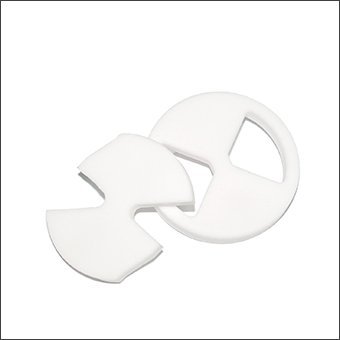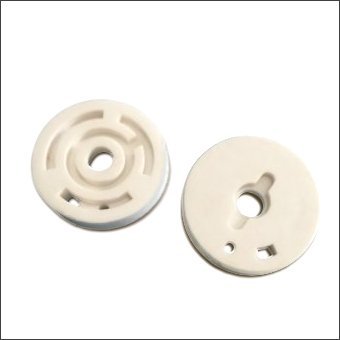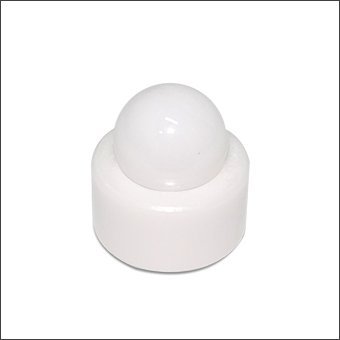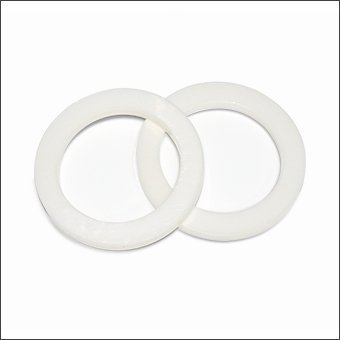Multiple Material Options
We focus on high-end fluid control solutions and provide high performance ceramic valve components in the following materials.
- Alumina (Al2O3): High hardness (90-99% purity). Suitable for general wear/corrosion resistance scenarios.
- Zirconia (ZrO2): Higher toughness and thermal shock resistance. Suitable for extreme temperatures.
- Silicon Carbide (SiC): Super corrosion resistance. Used in strong acid/alkali environments.
- Silicon Nitride (Si3N4): High thermal shock resistance. Suitable for high-frequency opening and closing valves.
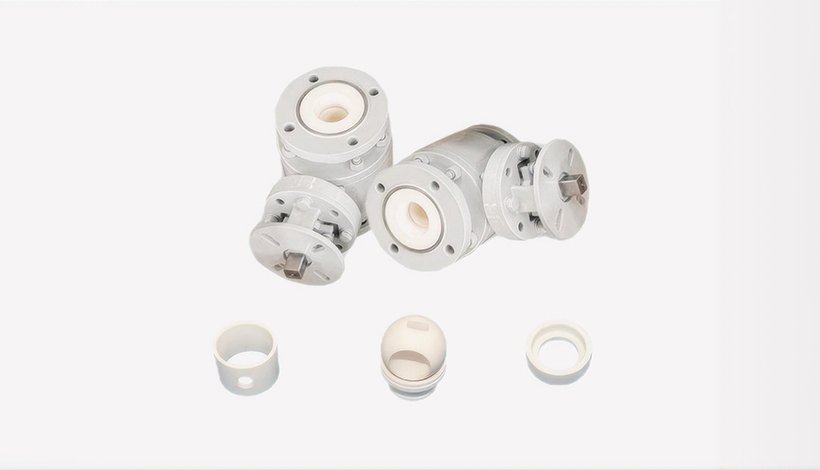
Premium Ceramic Valve Components Manufacturer
Jinghui provides high-quality ceramic valve components for fluid control equipment. With excellent corrosion resistance, zero leakage sealing and ultra-long service life, it helps to upgrade the performance of precision industrial, energy, chemical, and medical equipment – making fluid control under harsh working conditions more reliable and efficient.
We provide fast proofing and free technical consulting services. As an ISO certified factory, we always implement the principle of “quality first” and regard customer satisfaction as our eternal goal. Our products have been sold to more than 20 countries. Welcome to contact us!
Product By Features
From household faucets to medical equipment, our ceramic valve components protect fluid control systems with excellent wear and corrosion resistance, providing zero leakage solutions for various industries!
Produce according to your CAD drawing or samples to solve the compatibility problem of non-standard valve bodies.
Features high chemical (acid) resistance and smooth surface. With very precisely machined holes for metering reagents.
High-precision machining ensures a perfect fit and reduces the risk of leakage. Multiple materials available. Extra long life.
An ideal solution for abrasive, high-speed, and corrosive pumping systems requiring zero-maintenance sealing.
Al2O3 vs. ZrO2: How to Choose the Right Ceramic Valve Material?
When selecting ceramic valve components, material choice is critical to performance and longevity. What are the advantages of the two most common materials, alumina (Al2O3) and zirconia (ZrO2)? Here is a quick guide to help you make your choice.
- Alumina (Al2O3) – An Affordable and Durable Material
Pros: high hardness, excellent wear resistance and good chemical stability against acids and alkalis.
Cons: Lower fracture toughness than zirconia, making it more prone to breakage under impact.
Best for: Slurry handling, water treatment, and general industrial valves where wear is a major concern.
- Zirconia (ZrO2) – The Tough Choice
Pros: Excellent fracture toughness (2-3 times higher than alumina), better thermal shock resistance, and higher flexural strength.
Cons: Slightly lower hardness and higher cost than alumina.
Best for: High-pressure systems, extreme temperatures, and applications that require shock resistance (such as liquefied natural gas (LNG) valves).
- Key Decision Factors
Wear and impact: Al2O3 for pure wear; ZrO2 for mechanical stress.
Budget: Al2O3 is more suitable for large-scale use.
Environment: ZrO2 performs well in thermal cycles or corrosive media.
Still unsure? Contact us for your material selection guide.
Ceramic valves can last 5-10 times longer in abrasive/corrosive media. For example, in slurry, metal valve will fail in 3 months, while ceramic valve can last for more than 2 years.
Faucet ceramic discs have many advantages.
First, they have a very long service life. According to research, even after more than 500,000 opening and closing operations, the ceramic valve core can still maintain a smooth and labor-saving operation experience, ensuring its durability.
Second, excellent sealing. The high tensile strength, non-deformation, heat and cold resistance, wear resistance and non-corrosion characteristics of structural ceramics make the ceramic valve core perform well in terms of sealing, effectively preventing water leakage, and also helping to protect the environment and save water.
The ceramic ball valve is mainly composed of valve body, valve ball, valve stem, sealing ring, valve seat, etc. Among them, key parts such as valve ball and valve seat are made of high-performance ceramic materials.
This kind of valve controls the flow of fluid by rotating a ball. When the ball rotates to fit the sealing surface of the valve seat, the valve closes; when the ball rotates to separate from the sealing surface of the valve seat, the valve opens.
Ceramic ball valves are widely used in petroleum, chemical, electric power, and pharmaceutical industries. In these industries, fluid control systems require high-reliability and high-precision valves to control various media. Ceramic ball valves have become the first choice in these industries due to their excellent wear resistance and corrosion resistance.
Ceramic valve components have extremely excellent wear resistance, mainly due to the high hardness and stable chemical properties of advanced ceramic materials.
The wear resistance of alumina ceramics is 5-8 times that of ordinary stainless steel; zirconia ceramics have better toughness while maintaining high hardness, suitable for impact wear resistance; silicon carbide ceramics have higher hardness (>2800HV), especially suitable for extreme wear environments (such as medium containing particles).
In practical applications, the service life of ceramic valve components is usually 5-10 times longer than that of metal valve components, and is particularly suitable for high-wear conditions such as mining, chemical industry, and water treatment. Through precision polishing (surface roughness Ra ≤ 0.1μm) or special coating treatment (such as diamond coating), the friction coefficient can be further reduced and the wear life can be significantly extended.




